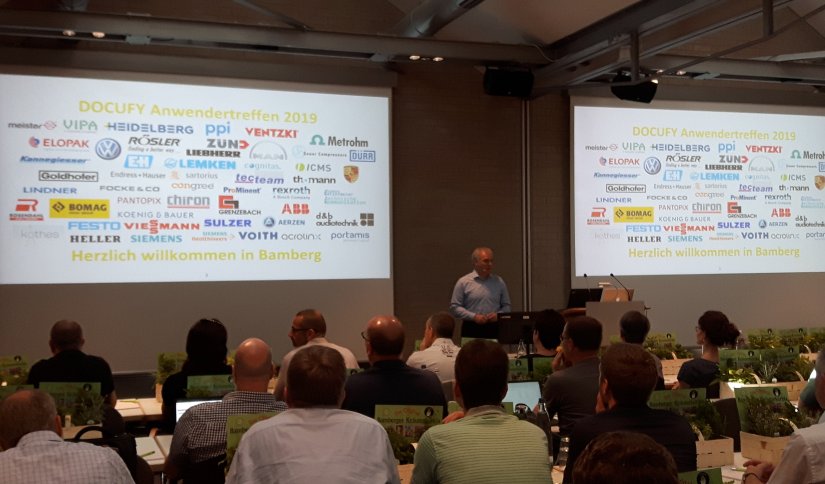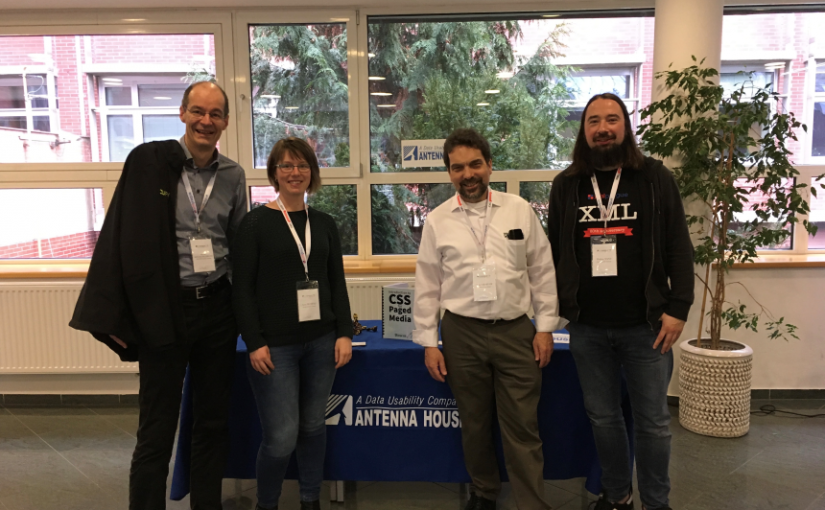What comes to your mind first when you think of Prague? Karlsbridge? Karel Gott? Goulash and beer? First of all we think of the meeting of XML disciples at XML-Prague. There are three days of concentrated input in the form of lectures and Meetups: On the Pre-Conference Day (7 February), various meetings of companies and organisations took place. Among others our partner AntennaHouse was present: there were news about the status of PDF generation with CSS, as well as general insights into the further development of AntennaHouse, e.g. containerization and cloud solutions.
The Schematron Users Meetup gave a nice overview about the current status of Schematron. Schematron is a language for making statements about the presence or absence of patterns in XML documents. It is often used as a supplement or alternative to the grammatical validation of XML documents with a DTD, a W3C XML Schema or RELAX NG.

From the first day of the conference (8 February) we took a lot of information with us: The lecture by Abel Braaksma: Writing more robust XSLT stylesheets by understanding and leveraging the XDM data model, which advocates strict typing in XSLT and XQuery, was interesting. A special highlight was the presentation by XML veteran Michael Kay, who gave a good overview of how to systematically detect and remove performance bottlenecks.
In the evening the legendary Social Dinner took place, like every year in the monastery Strahov. With a very tasty buffet and this year again with a demo jam. Each participant has five minutes to show something that has something to do with XML technologies and inspires the audience. The volume of the clapping audience decides the winner(s). Steven Pemberton, of course, had something up his sleeve with XForms: an analog clock as an XForms application. That was pretty cool. However, won a small application that visualizes the flow of XProc pipelines.

On day 2, Jim Etevenard: Sonar XSL’s presentation was particularly well received by almost all visitors. It was about a static code analysis for XSLT with SonarQube. An old friend of ours was Gerrit Imsieke with Splitting XML Documents at Milestone Elements Using the XSLT Upward Projection Method. It is precisely this method that we have already successfully used in customer projects.
But apropos Prague, goulash and beer: We could use the evening before the conference to check where the beer tastes better, in Bamberg or Prague – of course completely unbiased! The result was clear: Bamberg beer is a step ahead.
Our conclusion for XML Prague 2019: We took a lot of input and theoretical knowledge with us to Bamberg, we met interesting people and listened to exciting lectures. Next year we will definitely come back – then we will check whether goulash or Schäuferla tastes better

YouTube videos of the entire event
The two conference days of XML Prague 2019 can be experienced on YouTube:
Conference Day 1
Conference Day 2




